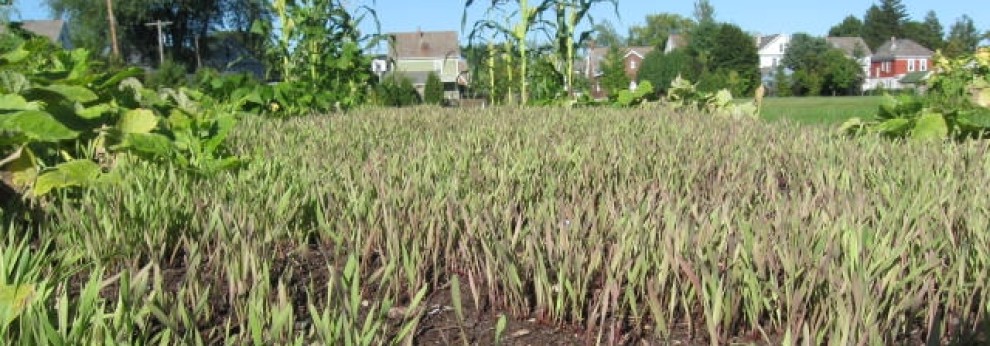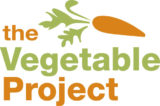 The New York State Food Donation and Food Scraps Recycling Law, adopted in 2019, requires businesses and institutions that generate an annual average of two tons of wasted food per week to donate excess edible food and recycling all remaining food scraps if they are within 25 miles of an organics recycler, such as a composting facility or anaerobic digester. But interestingly, while the law absolutely covers colleges, school systems serving kindergarteners through 12th graders are specifically exempt from the requirements.
The New York State Food Donation and Food Scraps Recycling Law, adopted in 2019, requires businesses and institutions that generate an annual average of two tons of wasted food per week to donate excess edible food and recycling all remaining food scraps if they are within 25 miles of an organics recycler, such as a composting facility or anaerobic digester. But interestingly, while the law absolutely covers colleges, school systems serving kindergarteners through 12th graders are specifically exempt from the requirements.
Maybe the state Legislature, in its infinite wisdom, recognized that K-12 schools are already overburdened with requirements that don’t always work as intended. Or maybe the thinking was that the schools would just get a bit extra time to gear up. Or perhaps there still is another reason.
 Either way, please allow folks who have been composting on Albany schools grounds for more than 10 years to suggest that our school district partners are missing a wonderful opportunity to create hands-on teaching and learning about environmental issues by waiting until they’re required to get into the game. Steering organic waste away from the city landfill isn’t just good for the environment. It offers students a chance to learn by doing and touching and experiencing about the role that decomposing and recycling of organic material play in healthy ecosystems. It would open windows to understanding the critical relationship between healthy soil and our ability to feed 8 billion people on this planet. And it might even foster a positive sense of civic engagement.
Either way, please allow folks who have been composting on Albany schools grounds for more than 10 years to suggest that our school district partners are missing a wonderful opportunity to create hands-on teaching and learning about environmental issues by waiting until they’re required to get into the game. Steering organic waste away from the city landfill isn’t just good for the environment. It offers students a chance to learn by doing and touching and experiencing about the role that decomposing and recycling of organic material play in healthy ecosystems. It would open windows to understanding the critical relationship between healthy soil and our ability to feed 8 billion people on this planet. And it might even foster a positive sense of civic engagement.
The school district could organize composting food scraps in many different ways. We, however, would encourage asking students to separate plant-based waste from other waste in the school lunchrooms. We would not do that with rules that we obviously cannot enforce, but instead with rich and recurring small-group – maybe one lunch table at a time – conversations about environmental impacts of composting vs. landfill disposal of organic material, the science of recycling organic material and challenges that municipalities face in handling streams of waste.
 And even if a school district produced enough organic waste to justify investment in mechanized management of the composting process, we would encourage retaining some very hands-on management setup, like those that the Vegetable Project has at Albany High School and Myers Middle School. Give students a chance to toss some scraps on a compost pile now and then. Show them the difference between the surface of a pile and the interior, as can only be seen by wielding a pitchfork. Show them the worms in a healthy pile. And let them feel the heat with their hands that a well-managed pile sometimes generates.
And even if a school district produced enough organic waste to justify investment in mechanized management of the composting process, we would encourage retaining some very hands-on management setup, like those that the Vegetable Project has at Albany High School and Myers Middle School. Give students a chance to toss some scraps on a compost pile now and then. Show them the difference between the surface of a pile and the interior, as can only be seen by wielding a pitchfork. Show them the worms in a healthy pile. And let them feel the heat with their hands that a well-managed pile sometimes generates.
Maybe most of all, we would encourage the school district to take pride in already being prepared when the law finally does require school districts to do what colleges and businesses and other institutions already do.
 As for what we do, we built new bins this summer for Albany High School and Myers Middle School with participants in the city’s Summer Youth Employment Program. We haven’t quite finished dismantling the old one at Albany High. So, the new one awaits setting in place. The new one at Myers has been in use since the end of August. Students, such as a volunteer from the College of Saint Rose, really get a close-up look at how it works and what it means when they screen composted organic material and toss the big chunks back to cook some more.
As for what we do, we built new bins this summer for Albany High School and Myers Middle School with participants in the city’s Summer Youth Employment Program. We haven’t quite finished dismantling the old one at Albany High. So, the new one awaits setting in place. The new one at Myers has been in use since the end of August. Students, such as a volunteer from the College of Saint Rose, really get a close-up look at how it works and what it means when they screen composted organic material and toss the big chunks back to cook some more.
–Bill Stoneman




One response to “Opportunities await schools hesitant to compost”